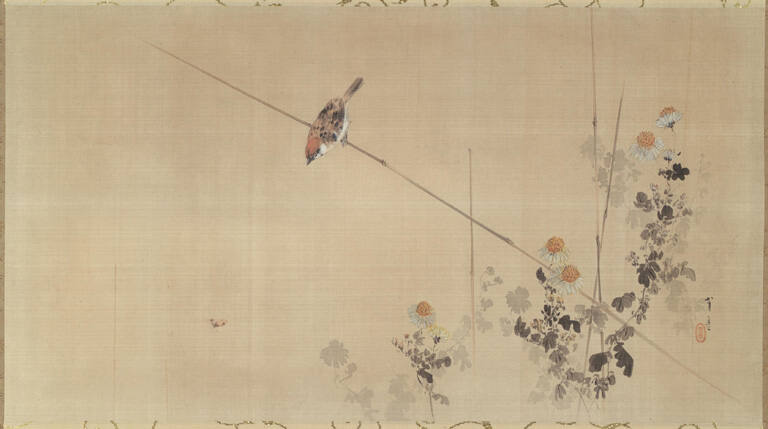
Object Details
Artist
Watanabe Seitei
Date
19th century
Medium
Hanging scroll: ink and colors on silk
Dimensions
Image: 13 11/16 × 26 7/8 inches (34.8 × 68.3 cm)
Credit Line
Gift of Dr. and Mrs. Frederick Baekeland
Object
Number
98.061.004
One of the most important Meiji-period painters of bird and flower subjects, Watanabe Seitei also pr(…)
One of the most important Meiji-period painters of bird and flower subjects, Watanabe Seitei also produced designs for textiles, cloisonné, and woodblock prints. His designs won awards at the first Domestic Industrial Exposition in Japan in 1877, and at the Paris Exposition in 1878, after which he spent three years in Paris studying Western-style painting. As a result, he enjoyed success as one of the first Meiji artists in demand among European collectors.After he returned from Europe, he combined the techniques he learned abroad with his training in Japanese painting to develop a fresh approach to traditional Japanese subject matter. (“American Sojourns and the Collecting of Japanese Art,” curated by Ellen Avril and presented at the Johnson Museum June 25–December 18, 2016)












